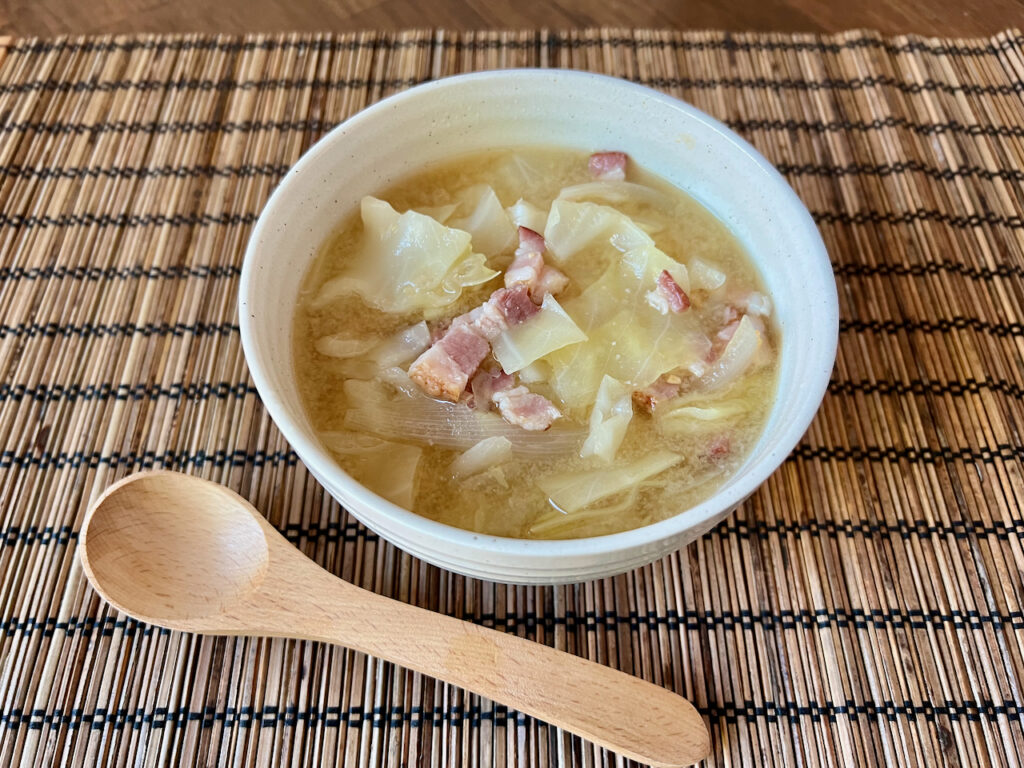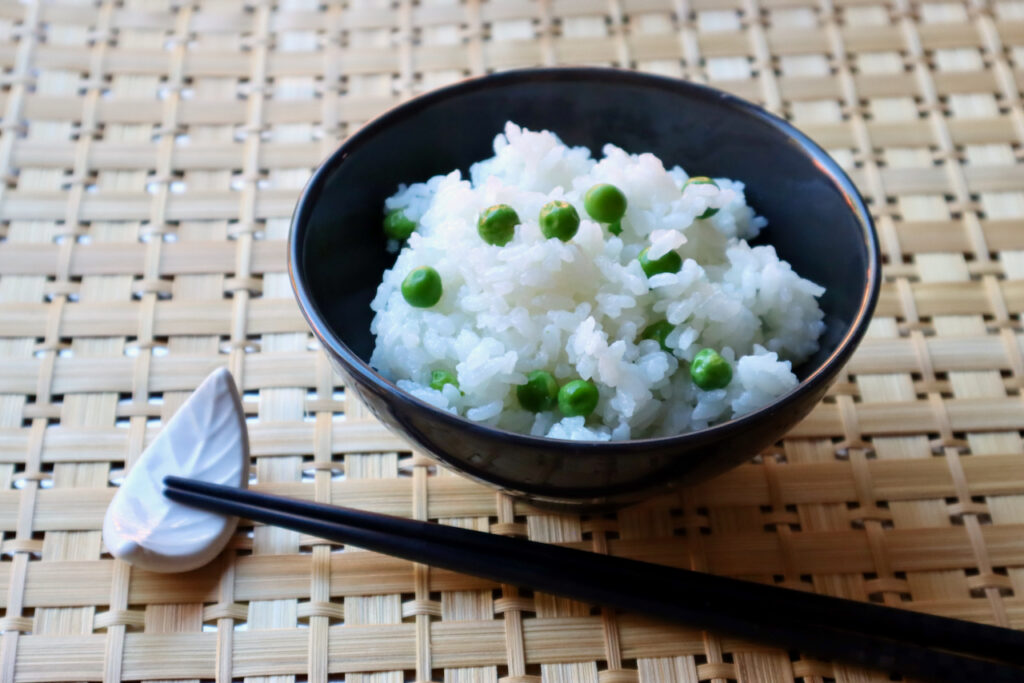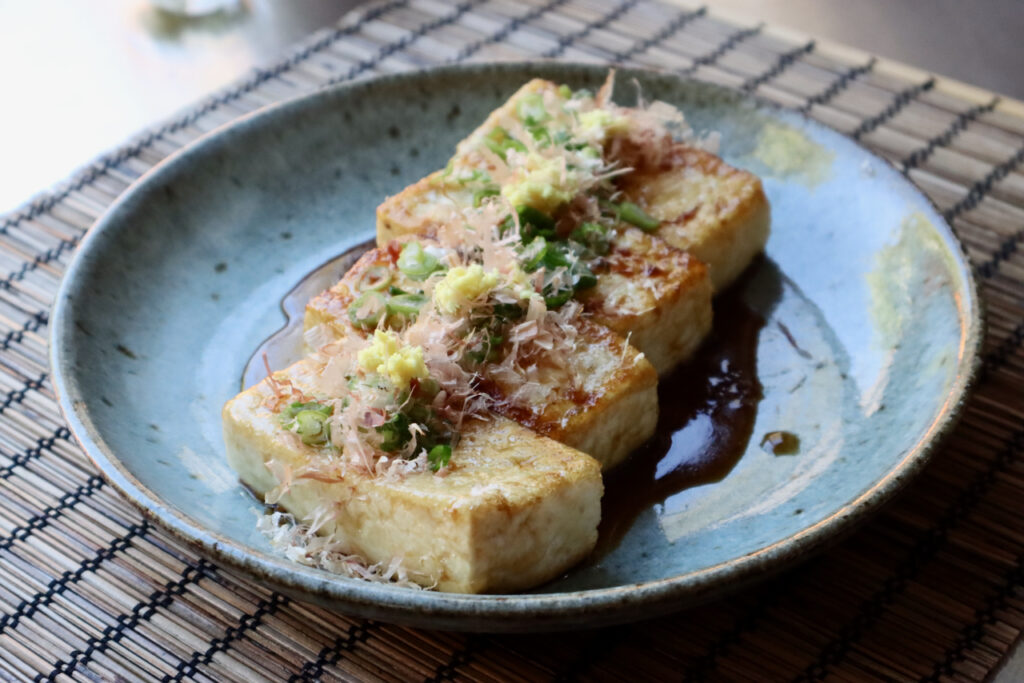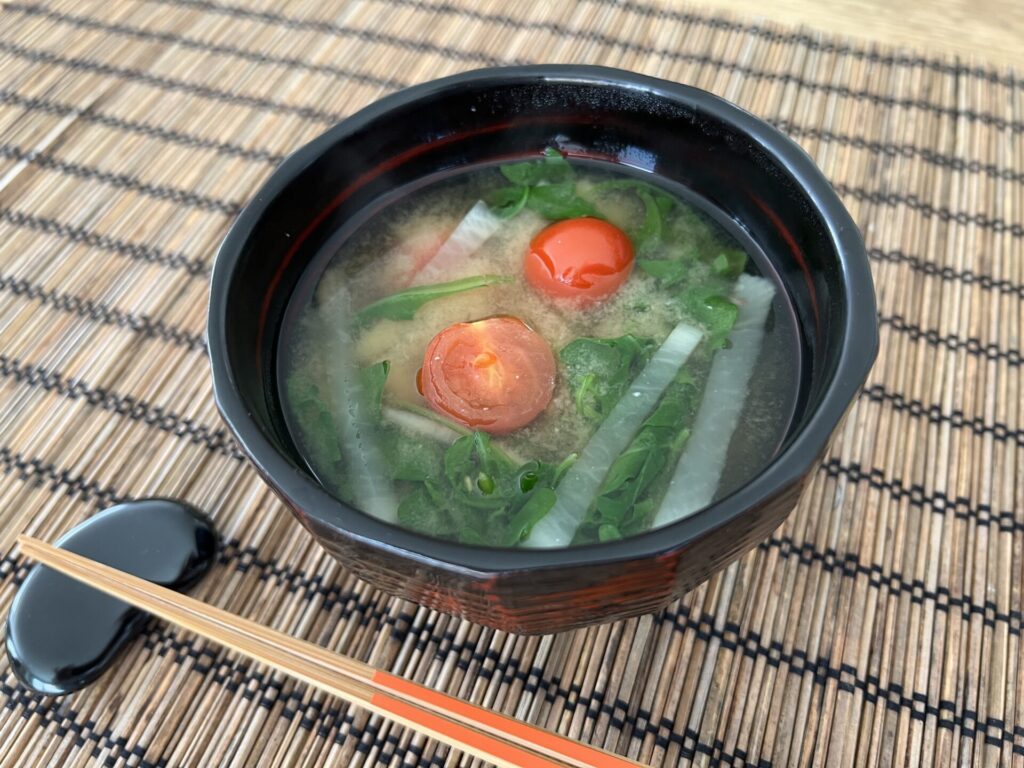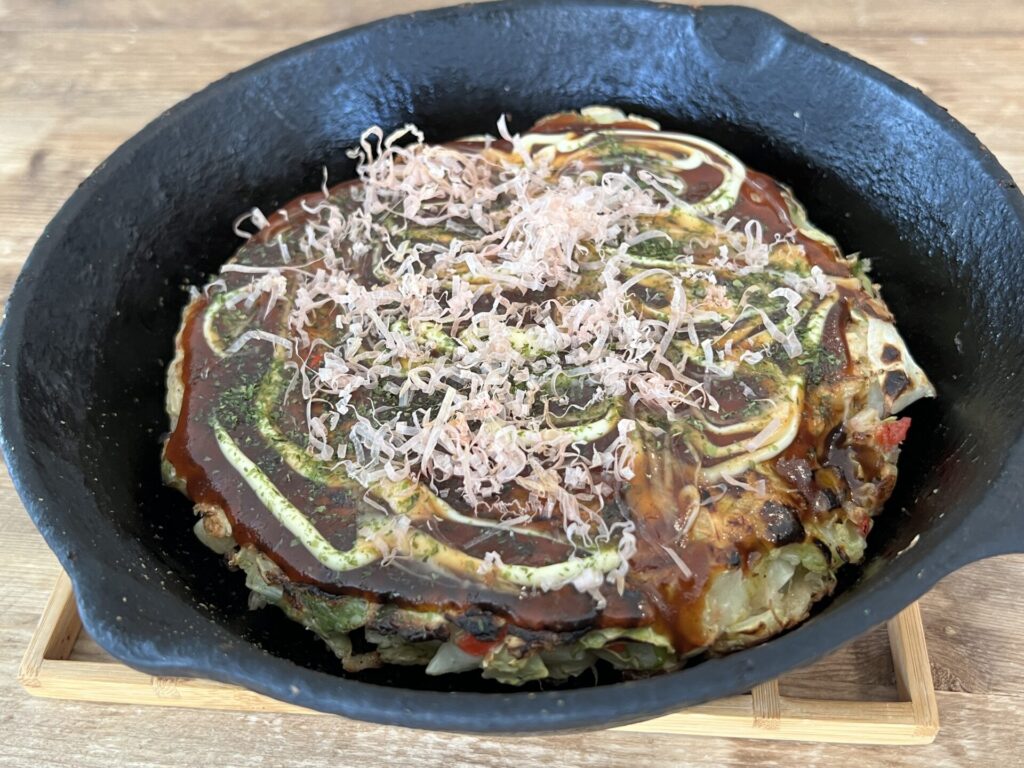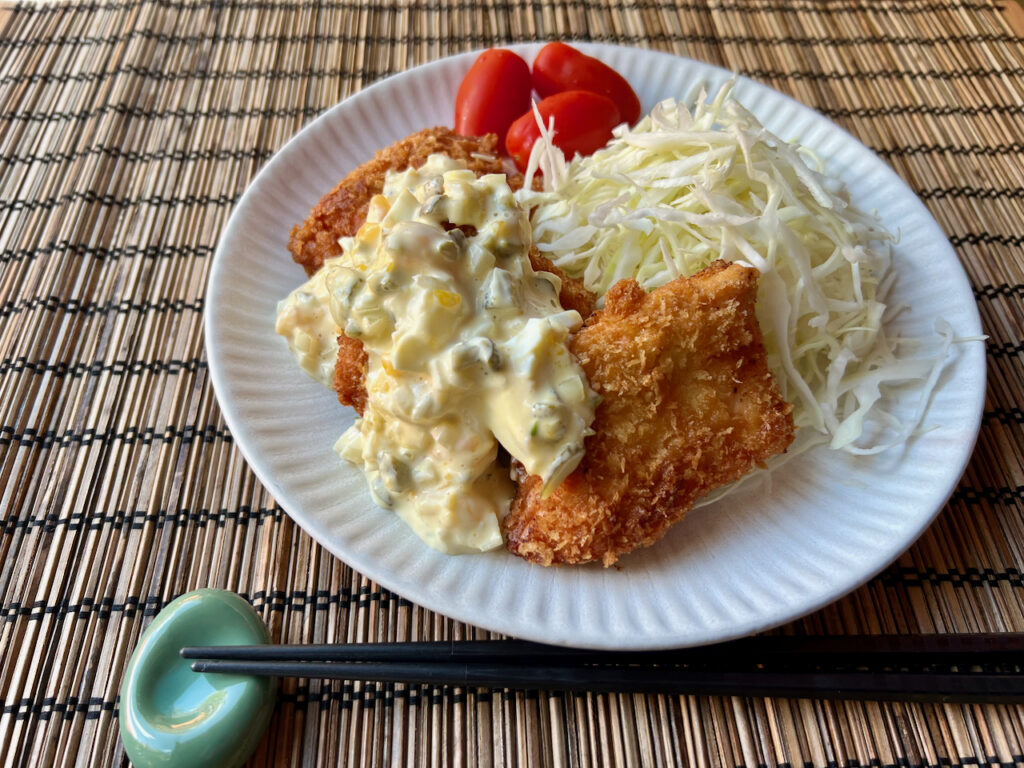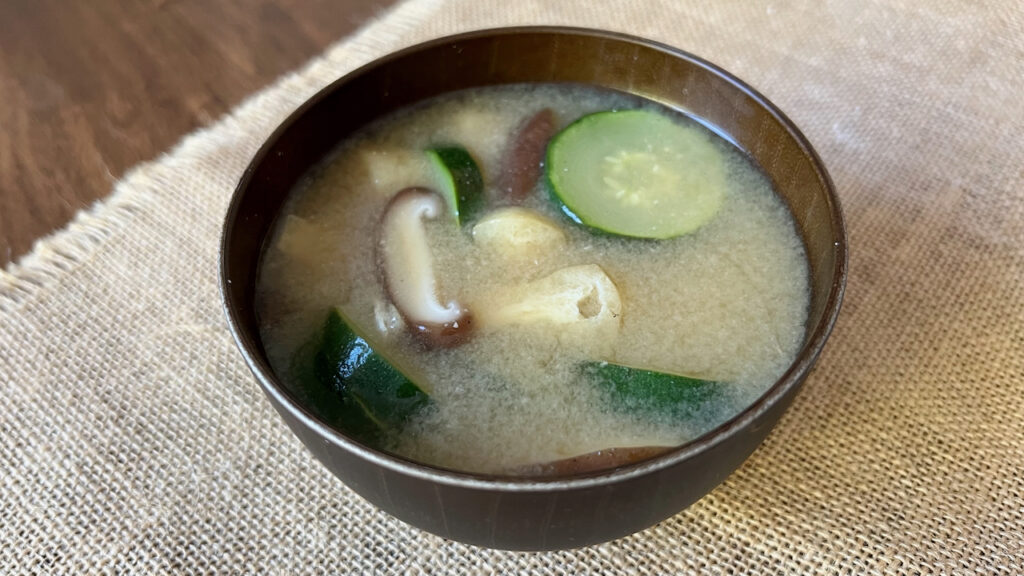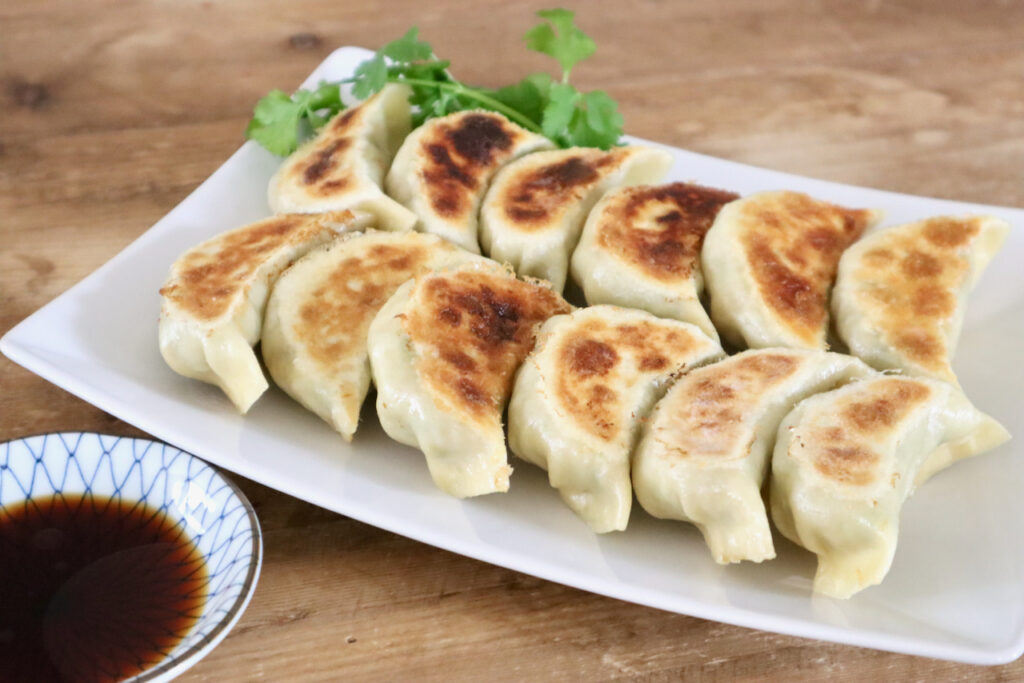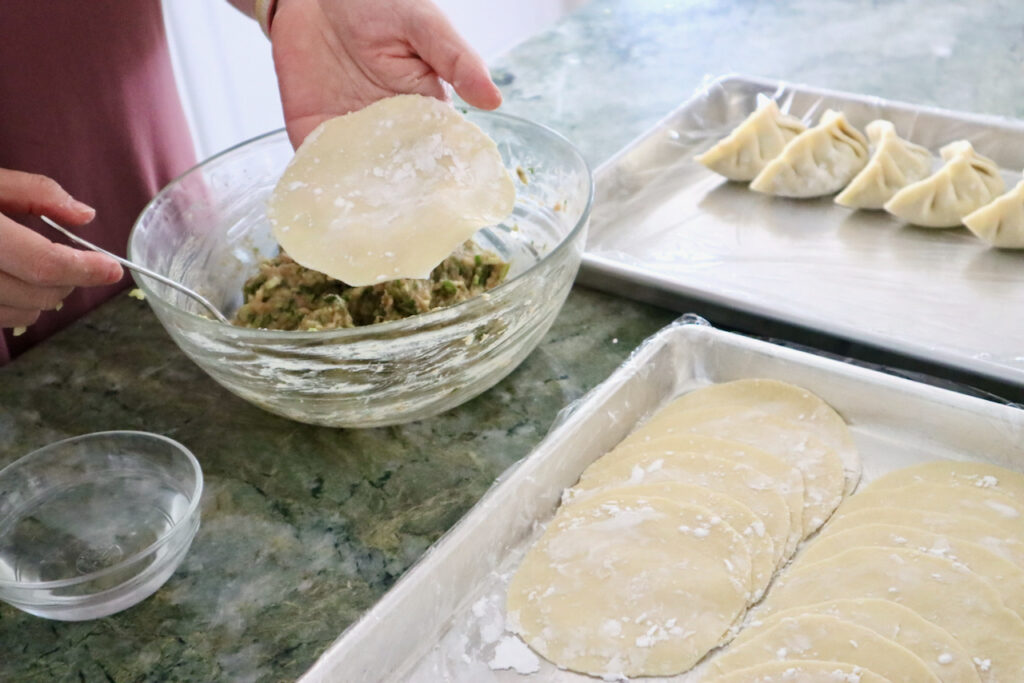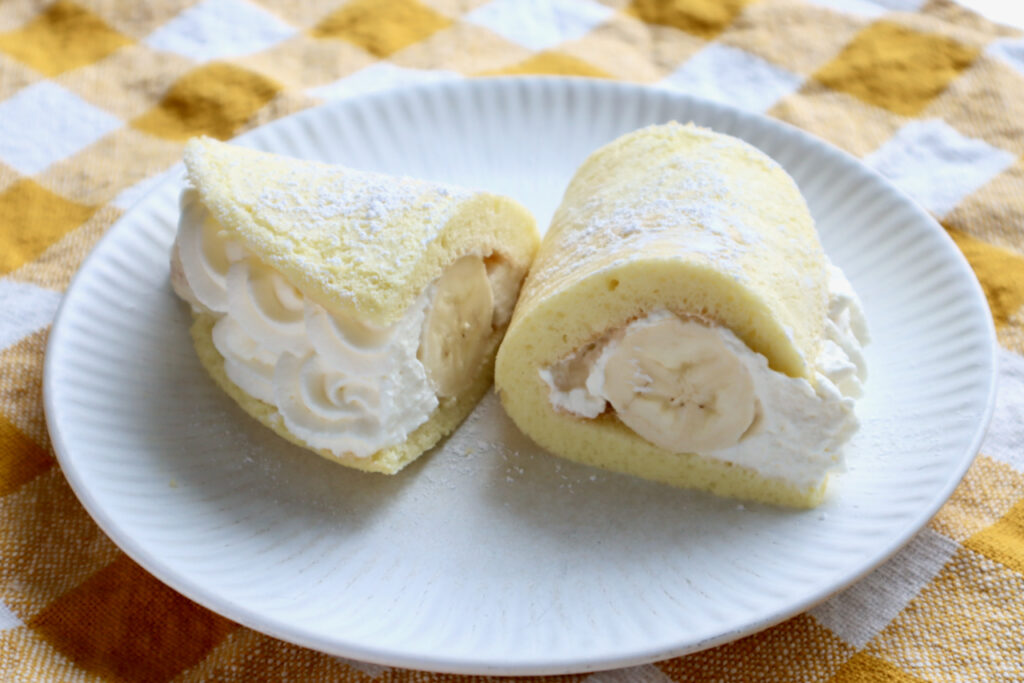Today’s miso soup is made with bacon, cabbage, and onion. Bacon is commonly used in western style soup such as chowder and minestrone, but it actually goes very well with Japanese miso soup, too! Dashi is almost not needed as the bacon has strong flavor, but we are adding instant dashi powder to the broth for added umami.
Mame Gohan is Steamed Rice with green peas mixed in. It is a classic spring-time rice dish when green peas are in season. In many Mame Gohan recipes, fresh green peas are often cooked with rice at the same time, but cooking green peas separately from rice, and mixing in later, keeps the peas crisper and keeps their bright color which suits a more springy look. Mame Gohan is nothing fancy, but it is eaten to cerebrate spring and to bring seasonal flavor to the table in Japan.
Tofu Steak (豆腐ステーキ) is pan-fried tofu with a Soy Sauce-based savory sauce. Tofu is mild-flavored bean curd and usually cooked in dishes as one of many side ingredients, but it is the main character of this recipe. Tofu Steak is delicious in a strongly flavored sauce with refreshing spicy grated ginger, and goes very well with Steamed Rice. This dish is a great way to add good protein to your meal that is very healthy and also easy on your budget.
Today’s miso soup is made with Daikon radish, cherry tomatoes, and arugula. Daikon’s crunchy texture, cherry tomato’s sweet and sour flavor, and arugula’s bitterness all come together in a deliciously savory miso soup.
You like Okonomiyaki with pork? Then try this variation with shrimp and cheese. Seafood Umami flavor from shrimp goes very well with the cabbage pancake, and melted cheese gives an interesting taste and texture to the dish. Never tasted Okonomiyaki before? Then you really must try this! I promise it’s delicious!
If you are looking for a different way to cook salmon other than grilling or pan-frying, try this deep fried salmon recipe. It’s crispy outside and juicy inside, and it’s so flavorful! Creamy and tangy Japanese style homemade tartar sauce adds a refreshing flavor to the fatty deep fried salmon.
Gyoza (餃子) are Chinese dumplings made with meat and vegetables wrapped in round pasta-like flour skins and then pan-fried. Gyoza are originally based on Chinese fried dumplings, but they are now a popular and well-rooted part of Japanese cuisine today. Recently, really authentic Chinese food called “Gachi-Chuka” is becoming very popular in Japan, but Gyoza is the opposite end of the spectrum. Japanese Gyoza have changed through time to accommodate the preferred taste of Japanese people and have, like Ramen, really become part of Japanese food.
Gyoza Wrapper is a thin and round (pasta-like) flour skin that can hold meat and vegetables to make Gyoza dumplings. Homemade Gyoza skins are quite different from store-bought ones. They are thicker, chewier, heartier, and still delicious, of course. They are simply made of flour and boiling water and, although a bit time consuming, easily made at home.
Banana Omelette Cake (バナナオムレットケーキ) is thin sponge cake folded in half, looking like a half round, and filled with a whole banana and whipped cream inside. Omelette cake is called “omelette” because of the resemblance of the shape of egg omelet. Classic banana and cream taste never betrays anyone’s expectation. Although this cake is rather simplistic (looking), it is sweet and soft and very tasty. This dessert is a bit old fashioned in Japan, but it’s still got steadfast popularity to be found at many shops there.
